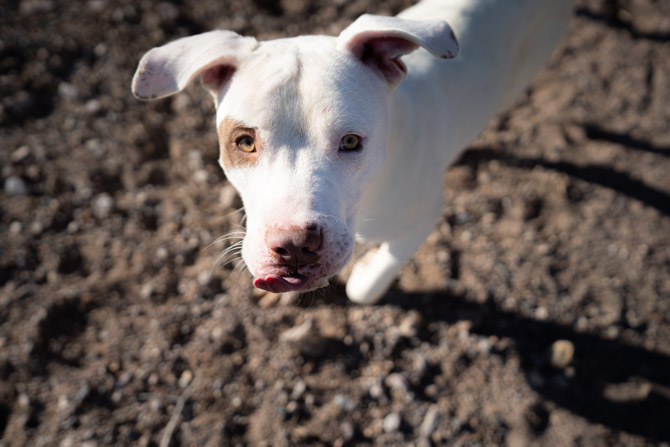“Does my dog have worms?” This is a valid question that many a dog owner asks. Of course, the most obvious way to find the answer is to clue up on the signs and symptoms of worms in dogs.
First things first, did you know there are multiple types of worm-like parasites that can be found in your dog? Yeah, it’s a pretty gross thought. Nonetheless, it’s important to know about worms.
By educating yourself on the types of worms common in Australian dogs and how they are contracted, you can help prevent a worm infestation.
Getting to know worms
The five most common worms (AKA pesky internal parasites) found in Aussie dogs are Hookworms, Roundworms, Tapeworm, Whipworm and Heartworm.
Unlike your common garden Earthworms, which are actually quite beneficial for your backyard, intestinal worms are absolute pests. In fact, they can pose a real risk to the health of your beloved pooch.
Let’s take a look at the little critters…
Roundworms
Roundworms appear as white, spaghetti-like parasites. Dogs can become infected with roundworm in utero or via milk from their infected mother. Dogs (and cats, for that matter) can also contract roundworm through contaminated toys, food and soil.
TIP: Roundworm is the most common intestinal worm passed on to humans.
While both puppies and adult dogs can become infected with roundworm, it is much more serious in puppies. However, the symptoms are also more apparent in puppies.
Signs and symptoms to be aware of include diarrhoea and vomiting and seeing worms in the dog’s stools.
Stunted or slow growth, having a potbelly and a poor (dull) coat hair are additional signs a puppy might display.
Tapeworm
Tapeworms look like little specks of wriggly rice, which may be seen in a dog’s stools. Tapeworm is typically spread through eggs contained in pets’ faeces. The tapeworm set up home in the dog’s intestine.
In most cases, infected dogs show no symptoms. However, sometimes the worms can be seen around the dog’s bottom. Also, a dog may have unexplained weight loss or there may be diarrhoea or vomiting.
Hookworms
Similar to roundworms, hookworms look like long strings of spaghetti, approximately 16mm long. Infected dogs pass the hookworm eggs in their stools. Other animals can become infected by ingesting the eggs or through the larva penetrating the skin. Yuk!
Hookworms live in our pets’ intestine and can cause considerable illness, including stunted growth and lung damage.
Signs of hookworm include lethargy, poor coat condition, anaemia and diarrhoea.
Whipworm
Whipworms live in the dog’s large intestine and are passed on via faecal-oral transmission. A key thing about whipworm is that they can survive in the environment for many years, increasing their chances of being ingested and passed on.
They are a common cause of diarrhoea in dogs. Often the diarrhoea will have blood or mucous present.
Heartworm
Although not an ‘intestinal’ worm, very few pet parents truly understand the basics of heartworm. Sure, we know we need to give our canine chums preventative medication to keep heartworm at bay, but that’s typically where our know-how stops.
Heartworm is transmitted by mosquito bites. The infected mosquito bites the dog and, in doing so, infects them with heartworm larvae.
However, a recent survey of Aussie pet owners showed that 1 in 3 dog owners believe heartworm is spread via birds and through eating infected food.
Heartworm can have some serious consequences. This is because the larvae move from the tissues to the heart, where they mature. Once in the heart, they can affect the blood flow to other essential organs such as the lungs.
The result of heartworm can be serious, even fatal. The negative effects of heartworm can include lung disease, heart failure, organ damage and death
Unfortunately, one of the issues with heartworm is that the symptoms often don’t show during the early stages. As such, it’s not until the disease has progressed that the signs become apparent.
Common symptoms of heartworm include intolerance to exercise, lethargy, difficulty breathing and weight loss.
Prevention
Now you know just how disgusting, and potentially serious, worms in dogs are, it’s important to take preventative measures.
It’s important to worm your dog regularly, not just to protect your four-legged friend, but also humans. After all, some worms can be passed to us humans, which isn’t a pleasant thought!
While some pet insurance policies don’t cover monthly preventative medication, sometimes there’s the option to take out cover for routine care.
For example, Pet Secure provides Optional Wellness Care, which you can add to your Accident & Illness Cover. This allows you to claim $60 a year towards heartworm control, amongst other things.
TIP: Preventative medication works by killing the larvae. As such, treatment needs to be administered on the due date (not a week later)!
Photo by Jason Pofahl on Unsplash







Leave A Comment